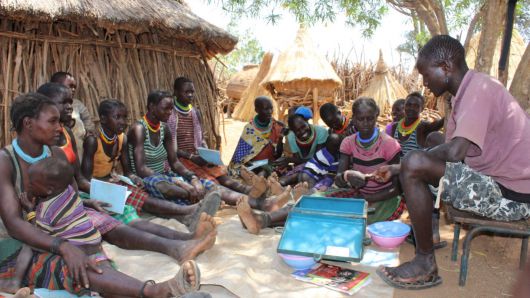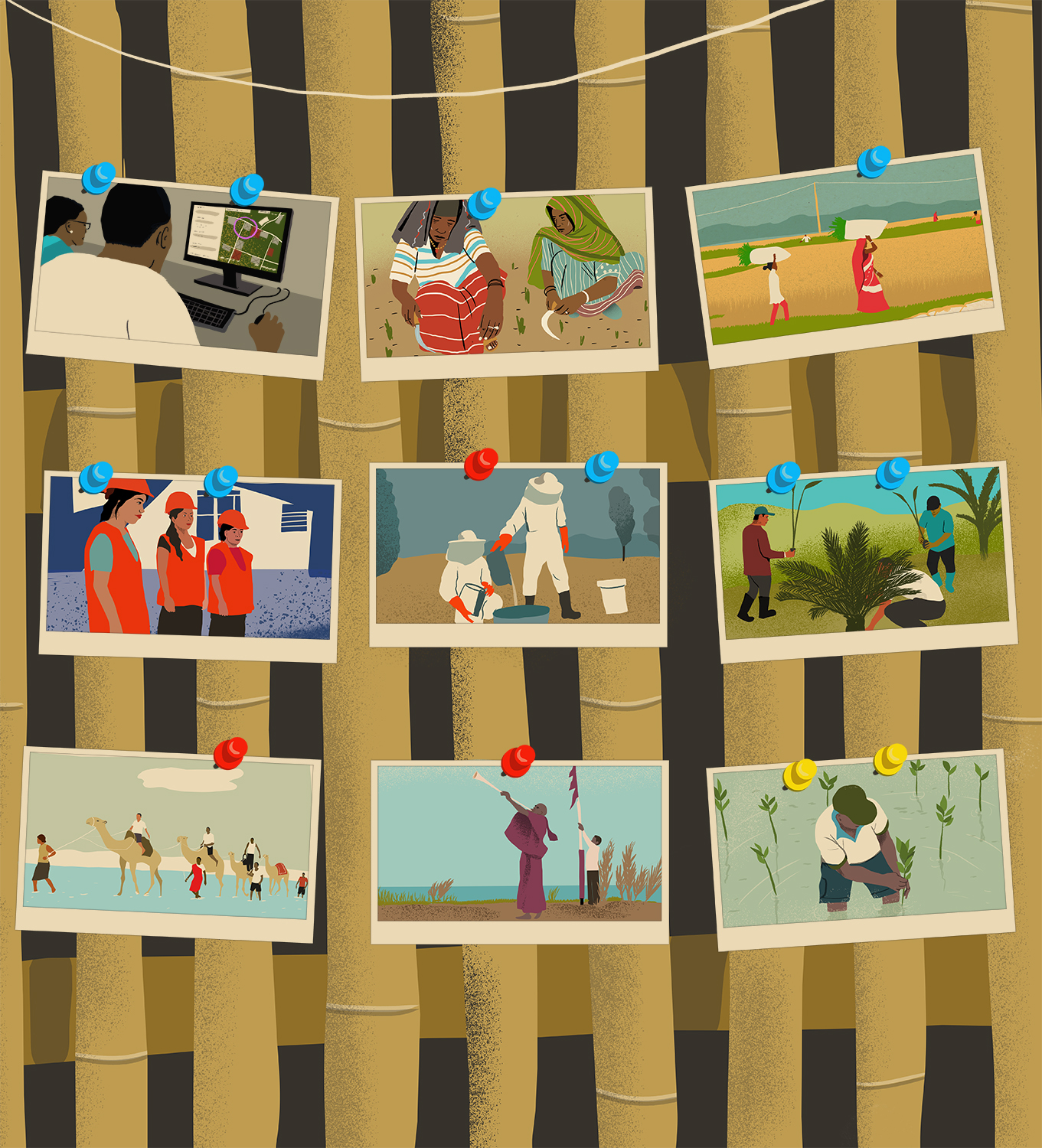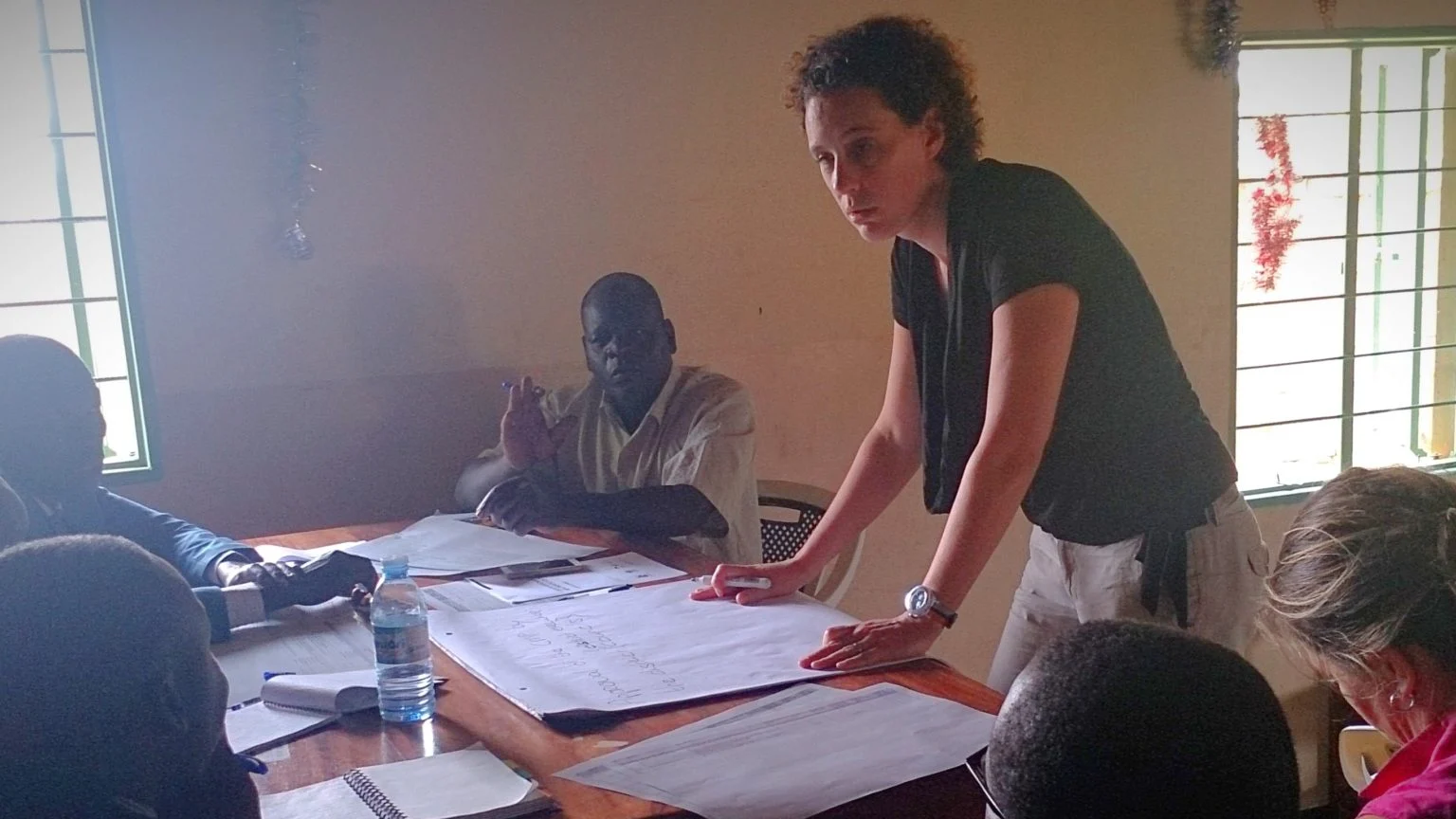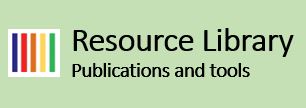09/06/2021 - Climate resilience in humanitarian aid and development

Picture: Community meeting in Uganda. Credit: Cordaid
Karen Stehouwer has been involved in the Partners for Resilience programmes as from the start in 2011. Below you can find an intreview with her; this interview has been published earlier on Cordaid's website.
Why did you start working for Cordaid’s resilience programme?
“For me, it started in 2011 when I went from project control to programme management. I was attracted to the work of building resilience because of its diversity and preventive character. For Cordaid it had already started around 2001. The organisation decided that responding to disasters wasn’t enough. We also needed to try to reduce the chances of disasters occurring wherever possible.
A disaster can occur when a natural or man-made hazard happens with an impact above people’s capacity to cope, resulting in massive loss of lives and livelihoods. Cordaid started to work on important measures that would decrease the chances of a hazard, for example, a hurricane or a drought, turning into an actual disaster.
Since 2011, we have been part of the Partners for Resilience alliance and developed our so-called integrated risk management approach. This means climate, people and nature come together as part of a joint solution.”
Resilience work can seem a bit technical and complicated to outsiders. How would you explain your work to them?
“For us, increasing resilience means reducing the risk of a disaster. We support people to strengthen their capacities to deal with hazards, limit their impact, or prevent hazards from turning into disasters.
That includes supporting people to anticipate risks, be prepared for crises, adapt and reduce possible impact, and adopt policies to tackle the root causes of disaster risks.
Sometimes this needs infrastructural solutions, like building a dike. For unavoidable hazards, people can prepare themselves by building safe shelters or building up stocks. Diversifying income and less dependency on a single livelihood will allow people to bounce back more easily when the economy is affected. In all cases, information is key, to allow people to act timely and adequately.”
Watch this video explaining integrated risk management.


Picture: Karen Stehouwer during a field visit in Uganda. Credit: Cordaid
What do you like most about your work?
“Cordaid’s resilience programme has supported many communities. For instance, by establishing early warning systems. These give people the time to adjust their livelihoods, anticipate changing weather patterns and restore natural buffers. It is this holistic and proactive approach that attracts me so much to this field of work.
Additionally, where, and whenever possible Cordaid works with local civil society organisations. This enables us to tailor projects to very specific local needs, to stimulate local ownership and to leave a solid structure behind after the project phases out, so they can continue the transformation that we started.”
In some cases, resilience programmes seem to be struggling to raise enough funds. What would be your plea for the continuation of climate resilience as a part of humanitarian and development work?
“Prevention is better than cure. Certain areas of the world are prone to droughts, or floods, or cyclones. Rather than waiting for the shit to hit the fan, people should learn to cope with these hazards.
Climate change is exacerbating all of this. Floods and droughts are getting more extreme. In many countries where people heavily depend on natural resources, competition over limited access to water and fertile land is leading to conflicts. Especially vulnerable people, often women, youth, elderly, migrants, and disabled persons, are disproportionately affected by climate change and ecosystem degradation. So, climate resilience is becoming even more crucial, to avoid a crisis on a massive scale.
And yet, we still see natural environments being destroyed all over the world, while healthy nature can provide vital buffers against threats to humans. For example, wetlands absorb masses of water and can reduce the impact of a flood and store it for dry periods. Simple steps in taking better care of nature can prevent major humanitarian crises.”
Despite all that still needs to be done, you must also look back at some hopeful and exciting achievements. Is there anything you are particularly proud of?
“I have been involved in the resilience programme in Uganda and that’s where I feel I have had my greatest personal achievements. I’m very proud of the work we did on managing water resources in the northeastern region of the country. Together with local and international partners, we supported the ministry to develop water resource plans across big geographical landscapes.
These plans balance the availability of water and the demand for it by different actors and provide suggestions for sustainable development. We came up with practical examples of nature conservation and resilient livelihoods that fit the natural environment of these areas. We also facilitated the participation of communities in the planning process so that their needs are considered. Today, we see that these plans are guiding the development work.
I’m also proud of our contribution to the Climate Change Bill in Uganda, which was adopted just recently. The Ugandan team of Partners for Resilience has done a great job in making this bill to support climate resilience for local communities.”
Going forward, what element of building climate resilience should we focus on more?
“Sustainable change can only be achieved when local people drive the change. So don’t just make your projects based on local needs, but make sure that the people themselves are in charge.
As an international organisation, we can foster these processes by providing access to new information, linking people, supporting those communities in their change process and to include the most vulnerable.”





